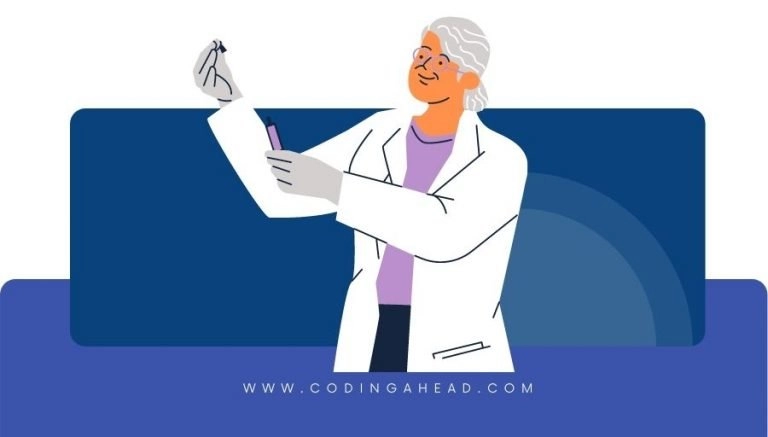How To Use CPT Code 67909
CPT 67909 describes the procedure for reducing overcorrection of ptosis, which is the drooping of the upper eyelid. This article will cover the official description, procedure, qualifying circumstances, appropriate usage, documentation requirements, billing guidelines, historical information and billing examples.
1. What is CPT Code 67909?
CPT 67909 is used to describe the revision of prior surgery performed to correct blepharoptosis, or drooping of the upper eyelid. The procedure involves reducing the tension on the muscles to allow the eye to close normally. This code is used when the provider makes an incision over the previous incision site, recesses or cuts the levator muscle or other suspension material, and closes the incision with sutures.
2. Official Description
The official description of CPT code 67909 is: ‘Revision of prior surgery for correction of blepharoptosis; reduction of overcorrection.’
3. Procedure
- The provider prepares the patient and administers anesthesia.
- An incision is made over the previous incision site.
- The provider recesses or cuts the levator muscle or other suspension material to reduce the overcorrection.
- The incision is closed in layers with sutures.
4. Qualifying circumstances
CPT 67909 is performed when a patient has previously undergone surgery to correct blepharoptosis and requires revision due to overcorrection. The procedure is appropriate when the provider needs to reduce the tension on the muscles to bring the eyelids into the correct position. It is important to note that this code specifically applies to the reduction of overcorrection and not the initial correction of blepharoptosis.
5. When to use CPT code 67909
CPT code 67909 should be used when a patient has previously undergone surgery for blepharoptosis correction and requires a revision procedure to reduce overcorrection. It is not appropriate to use this code for the initial correction of blepharoptosis or for any other eyelid procedures unrelated to overcorrection.
6. Documentation requirements
To support a claim for CPT 67909, the provider must document the following information:
- Patient’s history of prior surgery for blepharoptosis correction
- Description of the overcorrection that necessitates revision
- Date of the procedure
- Details of the procedure, including the incision site, recessed or cut muscles, and closure method
- Any complications or additional procedures performed
- Signature of the provider
7. Billing guidelines
When billing for CPT 67909, ensure that the procedure performed is a revision of prior surgery for overcorrection of blepharoptosis. Use the appropriate modifier to designate the involved eyelid (E1 for upper left, E2 for lower left, E3 for upper right, E4 for lower right). It is important to note that this code should not be reported with other codes for eyelid procedures unrelated to overcorrection of blepharoptosis.
8. Historical information
CPT 67909 was added to the Current Procedural Terminology system on January 1, 1990. There have been no updates to the code since its addition.
9. Examples
- A patient previously underwent surgery for blepharoptosis correction but experienced overcorrection. The provider performs a revision procedure to reduce the overcorrection and bring the eyelids into the correct position.
- After a previous surgery for blepharoptosis correction, the patient’s eyelids are overcorrected, causing difficulty in closing the eyes. The provider performs a revision procedure to reduce the overcorrection and restore normal eyelid function.
- Following a previous surgery for blepharoptosis correction, the patient’s eyelids are excessively elevated. The provider performs a revision procedure to reduce the overcorrection and achieve the desired eyelid position.
- A patient undergoes surgery for blepharoptosis correction but experiences overcorrection, resulting in asymmetry of the eyelids. The provider performs a revision procedure to reduce the overcorrection and improve the symmetry of the eyelids.
- After a previous surgery for blepharoptosis correction, the patient’s eyelids are pulled too tightly, causing discomfort and difficulty in closing the eyes. The provider performs a revision procedure to reduce the tension and improve eyelid function.
- A patient undergoes surgery for blepharoptosis correction but develops overcorrection, leading to an unnatural appearance of the eyelids. The provider performs a revision procedure to reduce the overcorrection and restore a more natural eyelid position.
- Following a previous surgery for blepharoptosis correction, the patient’s eyelids are raised too high, exposing more of the eye than desired. The provider performs a revision procedure to reduce the overcorrection and achieve the desired eyelid height.
- A patient undergoes surgery for blepharoptosis correction but experiences overcorrection, resulting in difficulty in fully closing the eyes. The provider performs a revision procedure to reduce the overcorrection and improve eyelid closure.
- After a previous surgery for blepharoptosis correction, the patient’s eyelids are elevated beyond the desired position. The provider performs a revision procedure to reduce the overcorrection and achieve the desired eyelid height.
- Following a previous surgery for blepharoptosis correction, the patient’s eyelids are excessively raised, causing discomfort and irritation. The provider performs a revision procedure to reduce the overcorrection and alleviate the symptoms.


